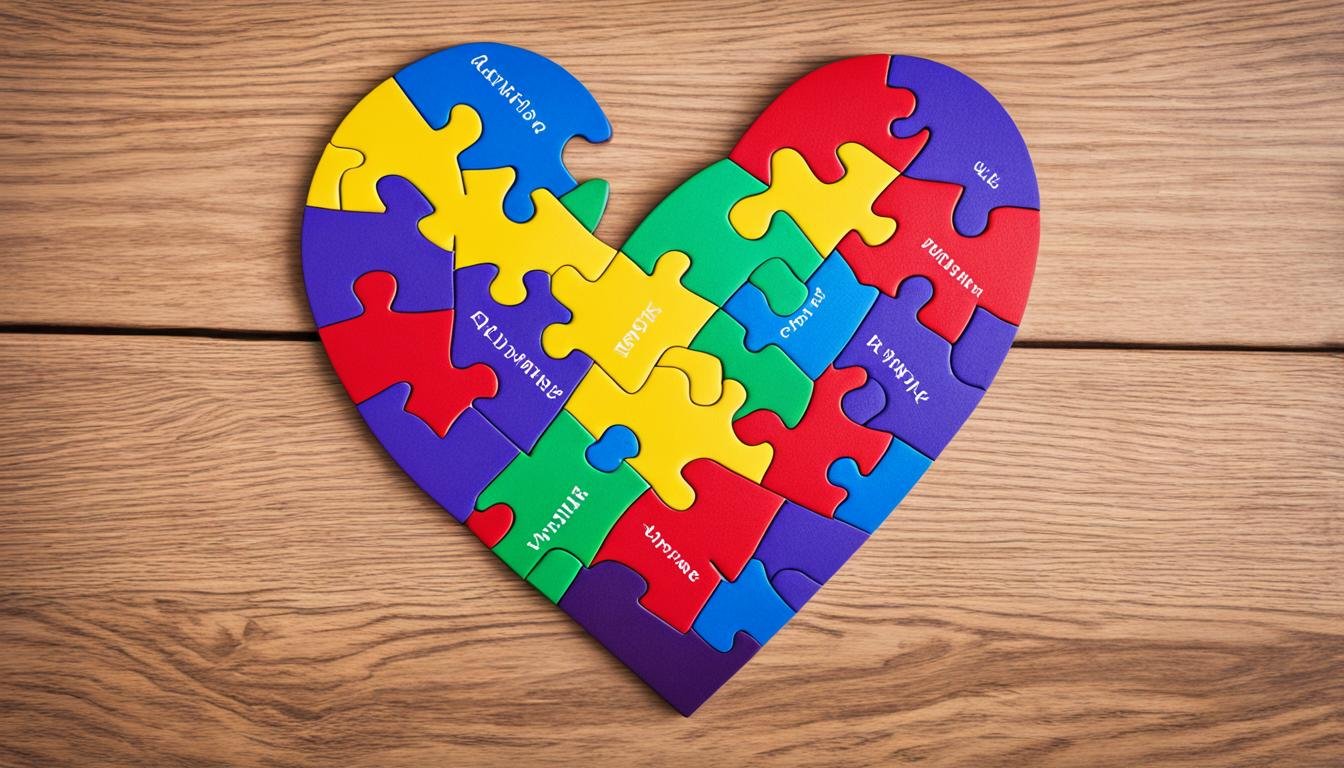Love is a universal language, but did you know that there are different ways of expressing and interpreting it? That’s where love languages come into play. The concept of love languages has gained popularity in recent years, but is it real? Let’s explore the definition of love languages and understand their significance in the context of relationships.
Love languages refer to the different ways individuals express and interpret love. The theory suggests that there are five main love languages – Words of Affirmation, Acts of Service, Receiving Gifts, Quality Time, and Physical Touch. Each person may have a primary and secondary love language that they use to express and receive love.
Understanding love languages can contribute to better communication, deeper connections, and overall compatibility between partners. It is important to note that love languages are not a one-size-fits-all solution but can serve as a helpful tool in building and strengthening relationships.
Key Takeaways
- Love languages refer to the different ways individuals express and interpret love.
- The five main love languages are Words of Affirmation, Acts of Service, Receiving Gifts, Quality Time, and Physical Touch.
- Understanding love languages can contribute to better communication, deeper connections, and overall compatibility between partners.
- Love languages are not a one-size-fits-all solution but can serve as a helpful tool in building and strengthening relationships.
- By exploring and applying love languages, individuals can enhance their relationships and create a stronger emotional connection.
The Different Love Languages and their Types
Love languages are a crucial aspect of understanding how individuals express and interpret love. They help individuals identify their emotional needs and communicate them to their partner. Experts have identified five main love languages that we will explore in this section: Words of Affirmation, Acts of Service, Receiving Gifts, Quality Time, and Physical Touch.
Words of Affirmation refer to verbal expressions of love and appreciation, such as compliments, encouragement, or affectionate words. Individuals whose love language is Words of Affirmation value hearing positive and loving words from their partner.
Acts of Service involve doing things for your partner to show love and affection, such as cooking a meal or completing a task for them. Individuals whose love language is Acts of Service appreciate these gestures as symbols of care and love.
Receiving Gifts involves giving and receiving tangible symbols of love, such as presents or tokens of appreciation. Individuals whose love language is Receiving Gifts appreciate thoughtful and meaningful gifts as expressions of love.
Quality Time involves spending meaningful time with your partner, doing things that both enjoy together. Individuals whose love language is Quality Time feel loved and appreciated when their partner is fully present and engaged in their company.
Physical Touch involves touch and physical contact, such as holding hands, hugging, or kissing. Individuals whose love language is Physical Touch feel emotionally close and connected through physical touch with their partner.

By understanding the different love languages and their types, individuals can gain insights into how they and their partners express and interpret love. Utilizing this knowledge can help create deeper emotional connections in a relationship. In the next section, we will examine how love languages function in relationships.
Examining Love Languages in Relationships
In a relationship, understanding and communicating love languages can contribute to better communication, understanding, and overall compatibility between partners. Each partner has their own unique way of expressing and interpreting love, and identifying their love language can help build a stronger connection.
The five main love languages are Words of Affirmation, Acts of Service, Receiving Gifts, Quality Time, and Physical Touch, and each person typically has one or two primary love languages. For instance, someone whose primary love language is Words of Affirmation may feel most appreciated when their partner verbally acknowledges and compliments them. Similarly, someone whose primary love language is Acts of Service may feel most loved by acts such as cooking dinner or running errands.
In addition to knowing your partner’s love language, it’s essential to respect and understand it. Failing to do so can lead to miscommunication and relationship issues. Even if your own love language is different, making an effort to speak your partner’s language can help strengthen your relationship.
“To be fully seen by somebody, then, and be loved anyhow–this is a human offering that can border on miraculous.” – Elizabeth Gilbert
It’s also important to remember that love languages can evolve over time and vary depending on circumstances. For instance, during challenging times, a partner may require more Acts of Service or Quality Time than usual. Being open to adapting to your partner’s changing needs and expressing love in a way they understand and appreciate can foster a deeper connection.

Overall, identifying and understanding love languages can help build a foundation of understanding and communication in relationships. By speaking your partner’s love language and showing them love in a way that resonates with them, you can create a more meaningful and fulfilling relationship.
Conclusion
Understanding and utilizing love languages can be a game-changer in any relationship. By taking a love language test or quiz, individuals can gain a better understanding of their own needs and preferences when it comes to receiving and expressing love. Similarly, sharing this information with their partner can lead to better communication, empathy, and ultimately, a stronger emotional connection.
There are many resources available for those interested in learning more about love languages. Books such as “The Five Love Languages” by Gary Chapman offer in-depth discussions on the subject, while quizzes like the one offered by 5lovelanguages.com can provide quick insights into an individual’s primary love language.
Ultimately, the key to making love languages work in a relationship is mutual respect and a willingness to adapt. By acknowledging and actively working towards meeting each other’s emotional needs, couples can strengthen their bond and build a foundation of trust and understanding.
FAQ
Is love language real?
Yes, the concept of love languages is based on the idea that individuals have different preferences for how they give and receive love.
What is the definition of love language?
Love language refers to the specific ways in which individuals express and interpret love, such as through words of affirmation, acts of service, receiving gifts, quality time, and physical touch.
How can I determine my love language?
You can determine your love language by taking a love language test or reflecting on how you naturally express love to others and what makes you feel loved in return.
Are there different types of love languages?
Yes, there are five main types of love languages: Words of Affirmation, Acts of Service, Receiving Gifts, Quality Time, and Physical Touch. Each person may have a primary love language and secondary ones as well.
Can love languages affect relationships?
Love languages can significantly impact relationships by improving understanding, communication, and overall compatibility between partners. By identifying and respecting each other’s love languages, couples can strengthen their emotional connection.
How can I use love languages to enhance my relationship?
By understanding your own love language and that of your partner, you can adapt your behavior to meet each other’s emotional needs. It is also helpful to openly communicate about love languages and find ways to express love in a way that resonates with your partner.
Are there resources to learn more about love languages?
Yes, there are books, quizzes, and tests available that can provide further insights into love languages. Some popular resources include “The 5 Love Languages” book by Gary Chapman and online quizzes that help identify your love language.

